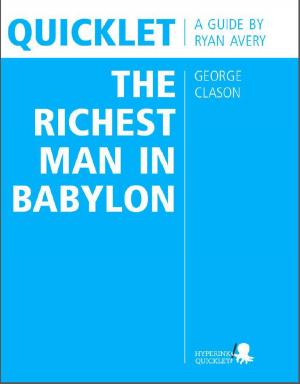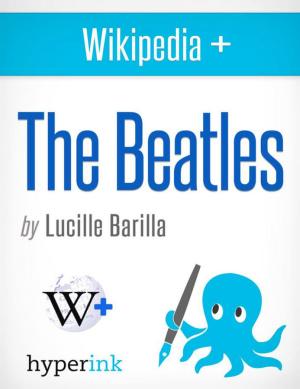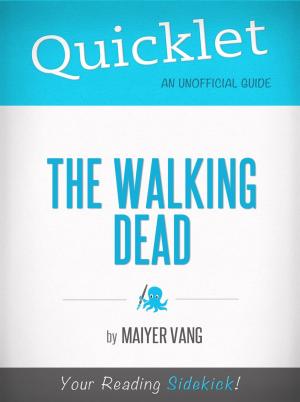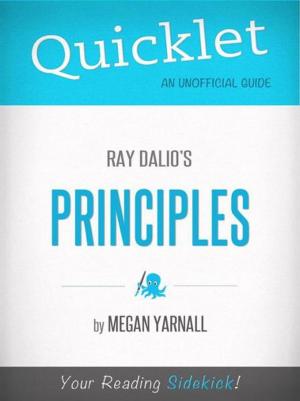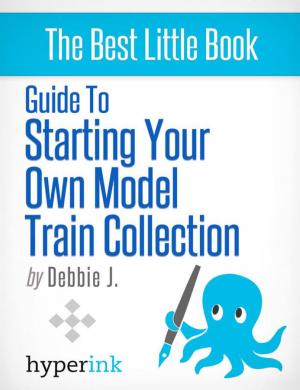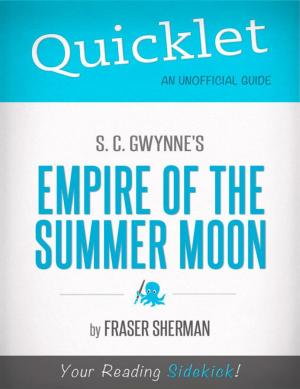Quicklet on Dan Ariely's The Upside of Irrationality (CliffNotes-like Book Summary and Analysis)
Nonfiction, Reference & Language, Study Aids, Book Notes, Art & Architecture, General Art| Author: | Tracy Clark | ISBN: | 9781614646730 |
| Publisher: | Hyperink | Publication: | July 30, 2012 |
| Imprint: | Hyperink | Language: | English |
| Author: | Tracy Clark |
| ISBN: | 9781614646730 |
| Publisher: | Hyperink |
| Publication: | July 30, 2012 |
| Imprint: | Hyperink |
| Language: | English |
ABOUT THE BOOK
I've tried to shed some light on a few of the biases that plague our decisions across many different domains, from the workplace to personal happiness.”
The Upside of Irrationality is Dan Ariely’s follow up book to his bestselling, Predictably Irrational: The Hidden Forces That Shape Our Decisions. His first book explored the downside of our inherent biases and irrational behavior. The Upside of Irrationality builds on the tenets of the first book, primarily how our reasoning abilities are often usurped by illogical forces.
In The Upside of Irrationality, Ariely allows us to be a fly on the wall for his very interesting, hands-on experiments, which reveal how our behaviors and decisions are influenced, leading us to act in irrational ways. The positive spin is Ariely’s belief that if we learn how we really operate, we can then create business models, policies, and personal relationships that are based on that knowledge.
The social experiments are well-explained, easily understood, and often reveal surprising truths about how we function. Seriously, we do some things that defy logic! But he shows why we do so; that our behaviors are based on a soup of varying factors. Dan Ariely makes the experiments the “hero” of the book, in that they are a huge focal point of each chapter. The experiments instruct and inform but are never dry, or too “academic” to understand. Nor are they ever boring.
Overall, the book provides commentary on irrationality yet remains hopeful. Perhaps someday, our actions, decisions, and business models will be based on an understanding of how we operate rather than ideas that are implemented without any verifiable data. Cases in point: large bonuses and online dating. Both are examples of irrational models that don’t jive with the research that shows what truly motivates a person to work hard on the job nor with how they make a complicated decision, such as who they choose as a mate.
Ariely also goes much deeper into his personal experience from a devastating burn accident in his late teens, and how that trauma gave him unique insight to human behavior. Essentially, it was that accident and his observations about pain management and his own behaviors as a recovering patient that led to his deep interest in the subject of behavioral science.
There is an upside to being irrational and any rational person would have to agree with Ariely’s conclusion that understanding how we operate, and devising strategies based on that knowledge, will vastly improve our professional and personal lives.
EXCERPT FROM THE BOOK
“From a rational perspective, we should make only decisions that are in our best interest (“should” is the operative word here). We should be able to discern among all the options facing us and accurately compute their value-not just in the short term but also in the long term-and choose the option that maximizes our best interests.”
Yet, we don’t.
That’s exactly what makes The Upside of Irrationality such an entertaining read. In a gentle but no-nonsense tone, Mr. Ariely shows, citing his own clever, controlled research experiments, just how irrational humans can be. And most surprising, that it’s not always a bad thing to be that way.
From online dating to revenge, from how hard we work at our jobs to how we choose our charitable donations, we learn how our choices and DECISIONS are often influenced by many factors. Ariely capitalizes ‘decisions’ to emphasize the emotional weight imbued in many of our decisions. We do not make decisions as a computer would, taking into account the facts and the most rational course of action.
...buy the book to continue reading!
ABOUT THE BOOK
I've tried to shed some light on a few of the biases that plague our decisions across many different domains, from the workplace to personal happiness.”
The Upside of Irrationality is Dan Ariely’s follow up book to his bestselling, Predictably Irrational: The Hidden Forces That Shape Our Decisions. His first book explored the downside of our inherent biases and irrational behavior. The Upside of Irrationality builds on the tenets of the first book, primarily how our reasoning abilities are often usurped by illogical forces.
In The Upside of Irrationality, Ariely allows us to be a fly on the wall for his very interesting, hands-on experiments, which reveal how our behaviors and decisions are influenced, leading us to act in irrational ways. The positive spin is Ariely’s belief that if we learn how we really operate, we can then create business models, policies, and personal relationships that are based on that knowledge.
The social experiments are well-explained, easily understood, and often reveal surprising truths about how we function. Seriously, we do some things that defy logic! But he shows why we do so; that our behaviors are based on a soup of varying factors. Dan Ariely makes the experiments the “hero” of the book, in that they are a huge focal point of each chapter. The experiments instruct and inform but are never dry, or too “academic” to understand. Nor are they ever boring.
Overall, the book provides commentary on irrationality yet remains hopeful. Perhaps someday, our actions, decisions, and business models will be based on an understanding of how we operate rather than ideas that are implemented without any verifiable data. Cases in point: large bonuses and online dating. Both are examples of irrational models that don’t jive with the research that shows what truly motivates a person to work hard on the job nor with how they make a complicated decision, such as who they choose as a mate.
Ariely also goes much deeper into his personal experience from a devastating burn accident in his late teens, and how that trauma gave him unique insight to human behavior. Essentially, it was that accident and his observations about pain management and his own behaviors as a recovering patient that led to his deep interest in the subject of behavioral science.
There is an upside to being irrational and any rational person would have to agree with Ariely’s conclusion that understanding how we operate, and devising strategies based on that knowledge, will vastly improve our professional and personal lives.
EXCERPT FROM THE BOOK
“From a rational perspective, we should make only decisions that are in our best interest (“should” is the operative word here). We should be able to discern among all the options facing us and accurately compute their value-not just in the short term but also in the long term-and choose the option that maximizes our best interests.”
Yet, we don’t.
That’s exactly what makes The Upside of Irrationality such an entertaining read. In a gentle but no-nonsense tone, Mr. Ariely shows, citing his own clever, controlled research experiments, just how irrational humans can be. And most surprising, that it’s not always a bad thing to be that way.
From online dating to revenge, from how hard we work at our jobs to how we choose our charitable donations, we learn how our choices and DECISIONS are often influenced by many factors. Ariely capitalizes ‘decisions’ to emphasize the emotional weight imbued in many of our decisions. We do not make decisions as a computer would, taking into account the facts and the most rational course of action.
...buy the book to continue reading!



